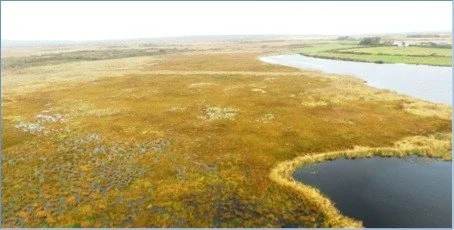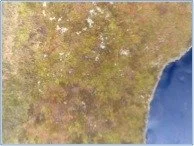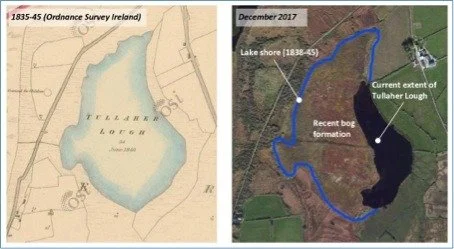Discovery of a newly formed Irish bog
A recent study carried out to determine the value of using unmanned aerial vehicles (UAVs) or drones in undertaking habitat surveys of inaccessible wetland areas made an unexpected discovery. The traditional view of bog formation is that it occurs over a very long time frame of centuries or even millennia. The outcome of a recent survey by Wetland Surveys Ireland Ltd (WSI) suggests that a west of Ireland bog has evolved from an open water lake to an actively growing peat bog within the last 150 years.
Tullaher Lough in County Clare was the subject of the study undertaken by WSI on behalf of the National Parks and Wildlife Service (NPWS). The lake and its fringing wetlands form part of a Special Area of Conservation designated under the EU Habitats Directive. Despite the recognised value of the wetland, the habitats have not been subject to any intensive investigation, due in part to their inaccessible nature.
Interpretation of drone imagery collected during the winter 2017 survey clearly shows that bog vegetation has established in the area to the west of the lake. Bog Cotton and red bog moss (appear as bright red), Heather (dark brown), other Sphagnum mosses (bright green), and bushy lichens (patchy light grey) are all clearly visible (see opposite). An ecological walkover survey subsequently confirmed that the habitat throughout the area corresponds to acid bog, with a high water table, undulating topography, and a dominance of typical bog species.
A review of historic mapping reveals that this area of bog has established since the mid-nineteenth century when the open water of the lake extended westwards (see below). The lake shore at that time was to the west of the current bog area.
A similar pattern of terrestrialisation and establishment of bog conditions over a comparable timeframe has previously been documented at Clara Bog, County Offaly in a PhD study undertaken by Patrick Crushell of WSI. Such rapid establishment of bog has also been reported by Dutch researchers at Radboud University Nijmegen.
Understanding the processes responsible for the development of bog habitat over a relatively short timeframe has important implications for bog restoration programmes and climate change mitigation. To this end, WSI intends furthering the research into this unique wetland area by supporting a research student to investigate the development history of the site in more detail.



